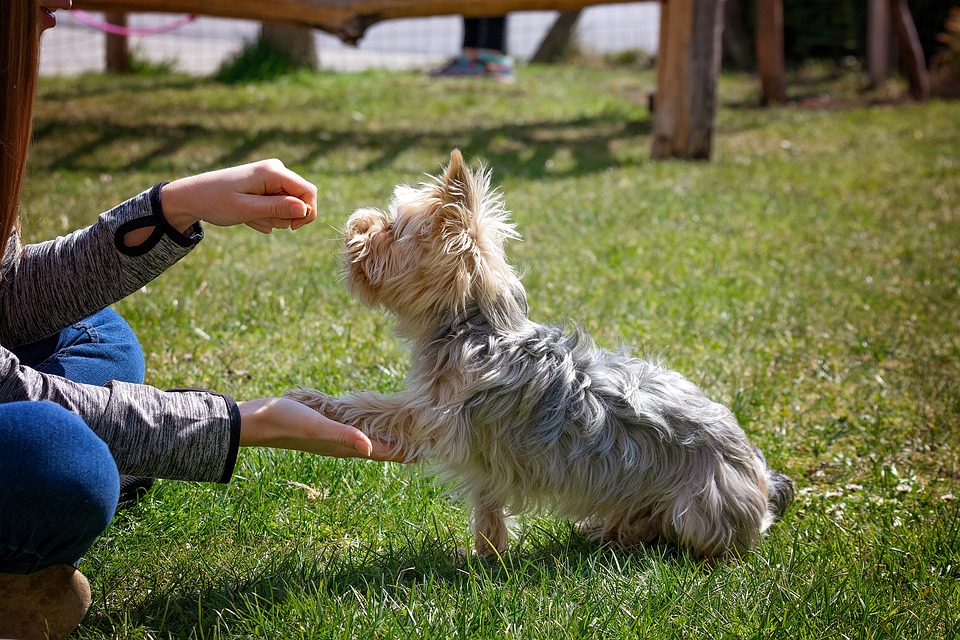Why Impulse Control Matters
Easy Ways to Teach Your Dog to Control Their Impulses
Have you ever struggled to resist the urge to eat one more cookie? Or buy that extra pair of shoes that you really don’t need? As adults, we can often control these impulses. But these skills aren’t something we were born with, and neither are dogs.
 In the dog training world, people refer to this skill as impulse control. Generally speaking, the goal is to help a dog learn how to resist temptations that would otherwise lead to undesirable behavior, such as:
In the dog training world, people refer to this skill as impulse control. Generally speaking, the goal is to help a dog learn how to resist temptations that would otherwise lead to undesirable behavior, such as:
- Jumping on guests
- Counter surfing
- Dashing out the door without permission
- Grabbing things from human hands
Fortunately, there are easy ways to help dogs learn how to control their impulses – they just take some practice, but it’s worth it. Not only will you enjoy the company of your dog more, but your dog will become more relaxed and confident too.
Ways to Teach Impulse Control
There are several different ways you can teach dogs to control their impulses, and some of them you probably already know!
Wait
It’s easy to confuse this request with other commands. However, you should think of Wait as hitting the pause button on your dog, unlike a Stay command that asks them to remain in a specific position without moving.
A great way of teaching Wait involves something you use every day – their food bowl. Instead of giving your dog their breakfast and letting them have at it, ask them to Wait to eat until you give the okay.
Leave It
Leave It is a great way to teach your dog not to grab. However, you should only practiced this skill when your dog doesn’t have something already. If they do, it’s better to use “Trade” to request a swap.
Teaching your dog to “Leave It” is a valuable tool for helping your dog to learn not to grab things, including icky stuff you may pass on a walk.
Polite Greetings
Who doesn’t dream of a dog that sits patiently and politely when greeting people? This activity is a perfect example of the benefits of teaching a dog impulse control as it works to help your dog avoid urges to jump all over people.
Mat
This training tool comes in handy at home and in new environments. It’s all about teaching your dog to lie comfortably on a specific mat, bed, or rug – anything portable that they’ll like to lay on. That’s because Mat involves teaching your dog to enjoy parking and settling themselves on this item, which can help keep them calm and relaxed anywhere you go.
ON/OFF Switch
Don’t worry, we also have a great suggestion for when your dog is so excited nothing else seems to help: The ON/OFF Switch.
Working with a highly aroused or amped-up dog in these moments can be especially tricky because any attention you provide can reinforce them, which often gets them even more excited. Instead, it’s helpful to have an alternative, and we like OOPS!
In these moments, the best response is to say “Oops!” to your dog, followed by something that doesn’t reward their behavior in any way. For example, if your dog gets wound up the moment you grab their leash, simply say, “Oops!” Then, put their leash on a table and go sit down.
This exercise works in every scenario you can imagine, whether you have a toy they want or you’re heading out the door. In each situation, just respond to their behavior with, “Oops!” and finish with something they can’t see as a reward – like turning away, hiding the toy behind your back, or closing the door. Once your dog responds in a calm manner, you can proceed with the activity.
The idea of teaching your dog impulse control may make you feel like a killjoy, but these skills will help them learn that they can control their enthusiasm and make good things happen. And, in the end, that makes dogs and their humans happier.

